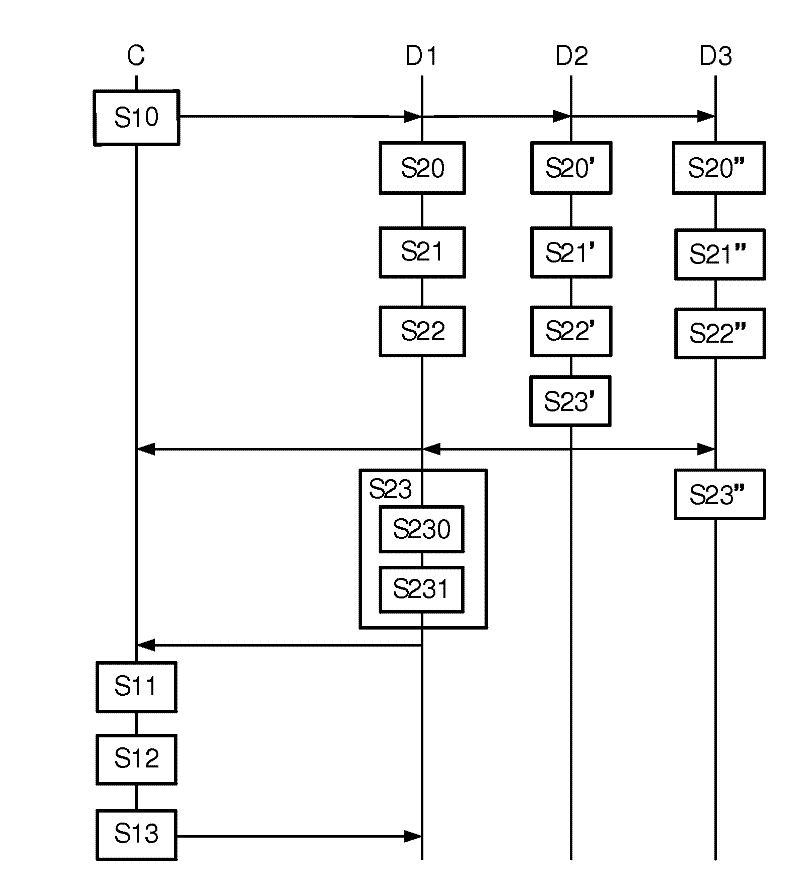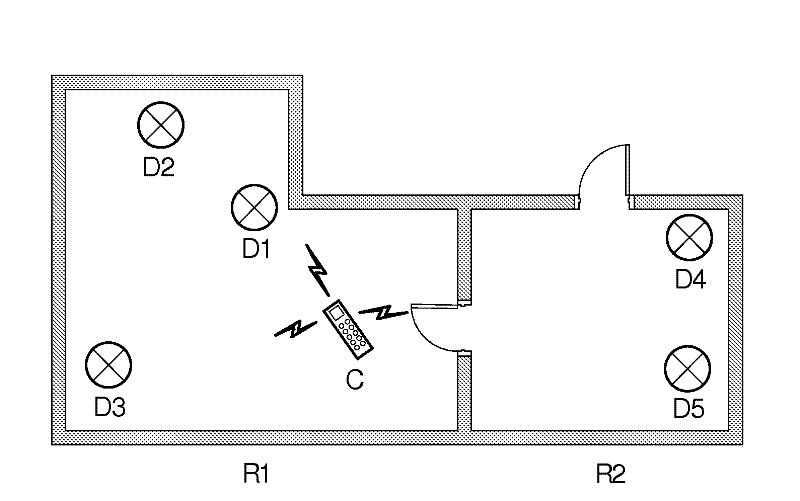Methods for selecting and controlling devices
A technology for equipment and target selection, applied in access restrictions, instruments, light sources, etc., can solve problems such as long delay and unsatisfactory user experience, and achieve the effect of reducing delay, simplifying processing complexity, and reducing electromagnetic radiation
- Summary
- Abstract
- Description
- Claims
- Application Information
AI Technical Summary
Problems solved by technology
Method used
Image
Examples
Embodiment 1
[0018] figure 1 The topology of a lighting area based on a wireless control network is shown. The lighting area is an indoor environment and includes two adjacent rooms R1 and R2. Luminaires D1 to D3 are installed in room R1 and D4 and D5 are installed in room R2. The wireless controller C sends a control signal to each lamp by unicast or multicast based on the unique identifier of each lamp to control its lighting functions, such as on / off, brightness, color, focus and rotation. The commissioning of the luminaires is done, which means the system knows where each luminaire is. Commissioning methods are well known to those skilled in the art and further details will not be given herein.
[0019] Such as figure 2 As shown, each light fixture includes a lighting component 210, using a wireless protocol (such as ZigBee TM ), the wireless communication module 220 , the processor 230 , the memory 240 and the power supply 250 . The wireless communication module 220 uses ZigBee...
Embodiment 2
[0064] Such as Figure 6 As shown, the transmit antenna of wireless controller C is directional, such as a directional antenna with beamforming capability. This antenna has relatively strong transmission power in the range of angle A (such as the direction pointed by wireless controller C), and has relatively weak transmission power in another angle range. Therefore, when the user wants to select the light fixture D2 and control it, the user can point his hand-held wireless controller C to D2. In this way, the azimuth angle θ (which is the angle between the peak emission direction and the direction pointing to D2) between the emission angles of luminaire D2 and wireless controller C is relatively small, while the azimuth angles of luminaires D3 and D1 are relatively large.
[0065] First, the wireless controller C broadcasts a detection message, and the transmission power within the angle A is strong, while the transmission power outside the angle A is weak.
[0066] Subsequ...
PUM
 Login to View More
Login to View More Abstract
Description
Claims
Application Information
 Login to View More
Login to View More - R&D Engineer
- R&D Manager
- IP Professional
- Industry Leading Data Capabilities
- Powerful AI technology
- Patent DNA Extraction
Browse by: Latest US Patents, China's latest patents, Technical Efficacy Thesaurus, Application Domain, Technology Topic, Popular Technical Reports.
© 2024 PatSnap. All rights reserved.Legal|Privacy policy|Modern Slavery Act Transparency Statement|Sitemap|About US| Contact US: help@patsnap.com










